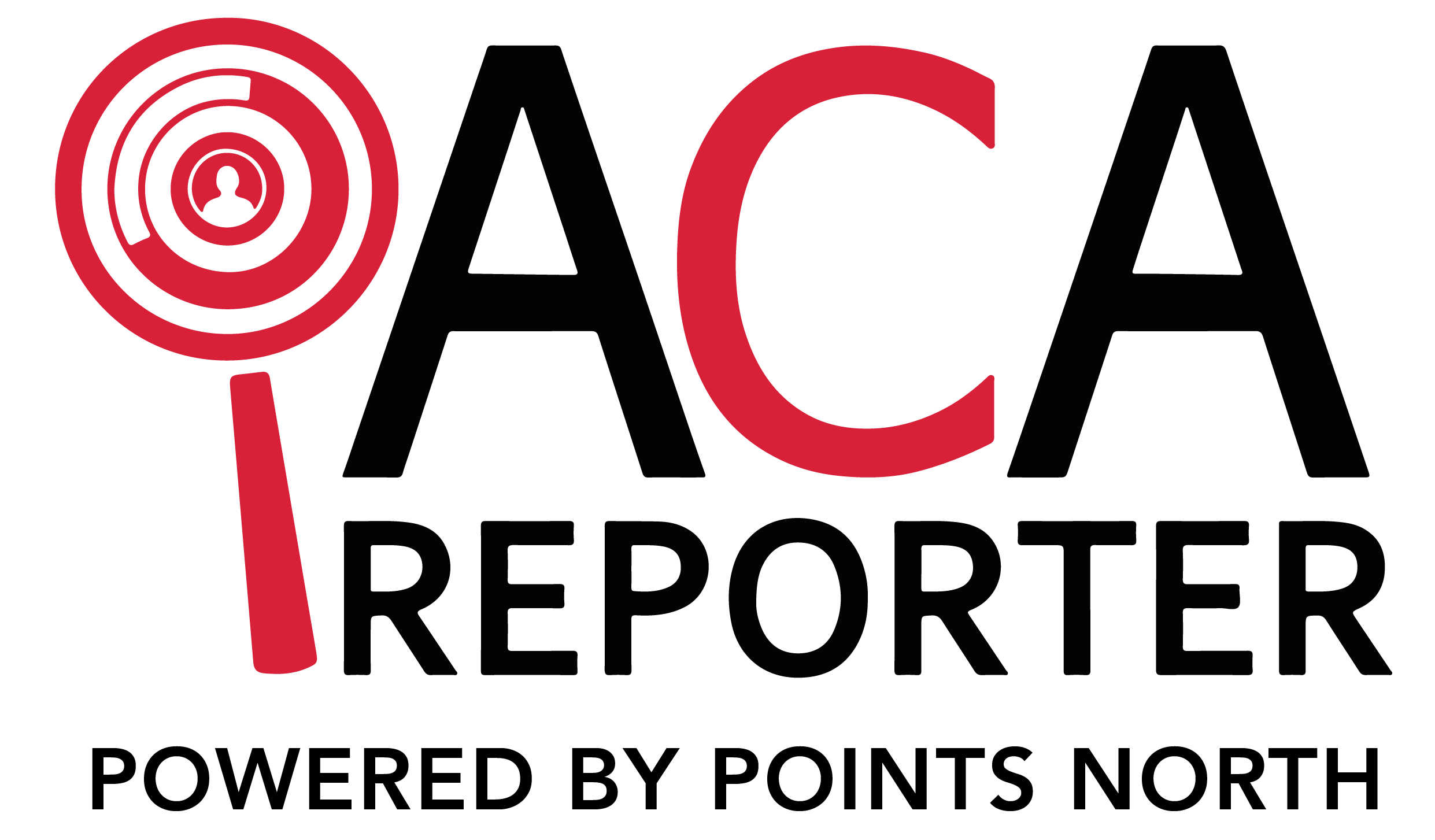You own three restaurant locations across the state. Each operates under its own LLC, has its own EIN, and manages its own payroll. When it comes to ACA reporting, you assume each location files separately—after all, they're legally distinct entities, right?
Not necessarily. The IRS may view your three restaurants as an aggregated ALE group, which is treated as one employer under controlled group rules. This distinction isn't just technical—it determines whether you're subject to ACA reporting requirements and could mean the difference between compliance and costly penalties.
For multi-location businesses, understanding ACA controlled groups and common ownership rules is essential. This guide explains how the IRS determines if your separate entities should be treated as one employer for ACA purposes, what it means for your compliance obligations, and how to avoid common pitfalls. We strongly recommend consulting with your CPA or legal counsel to determine if your specific business structure qualifies as a controlled group for ACA compliance purposes.
What Is a Controlled Group Under the ACA?
A controlled group is a set of legally separate businesses with common ownership that the IRS treats as a single employer for certain tax and benefit purposes, including ACA compliance. This concept comes from Section 414 of the Internal Revenue Code and directly impacts whether your business qualifies as an Applicable Large Employer (ALE). For the official IRS definition and detailed guidance on controlled groups, refer to the IRS Employee Plans Compliance Resolution System documentation.
Understanding controlled groups matters because of employee aggregation. Even if each of your locations has fewer than 50 full-time equivalent employees (FTEs), you may still be an ALE if your combined workforce across all entities reaches that threshold. If you're unfamiliar with ALE status, read our guide on what it means to be an Applicable Large Employer.
The controlled group determination affects:
- Whether you must offer health coverage to employees
- Your ACA reporting obligations (Forms 1094-C and 1095-C)
- Potential employer shared responsibility penalties
- How you calculate your total FTE count
Types of Controlled Groups (ACA Aggregation Rules)
The IRS recognizes three main types of controlled groups under ACA aggregation rules. Each has specific criteria based on ownership structure.
Parent-Subsidiary Controlled Group
A parent-subsidiary controlled group exists when one organization owns 80% or more of another organization. This is common when a corporate headquarters owns multiple franchise locations or subsidiary companies.
Example: ABC Restaurant Corp owns 85% of three separate restaurant LLCs. All four entities form a parent-subsidiary controlled group, and their employees must be aggregated for ALE determination.
The key factor is the chain of ownership—if Company A owns 80% of Company B, and Company B owns 80% of Company C, all three are part of the same controlled group.
Brother-Sister Controlled Group
A brother-sister controlled group occurs when five or fewer individuals, estates, or trusts own at least 80% of two or more organizations, taking into account only identical ownership. Additionally, these same owners must have more than 50% effective control of each organization when considering all their ownership interests.
Example: The Martinez family owns three healthcare clinics operating as separate LLCs:
- Maria Martinez owns 60% of Clinic A, 45% of Clinic B, and 40% of Clinic C
- Jose Martinez owns 25% of Clinic A, 30% of Clinic B, and 35% of Clinic C
- Their daughter owns 15% of Clinic A, 25% of Clinic B, and 25% of Clinic C
If the 80% and 50% tests are met, all three clinics form a brother-sister controlled group.
This structure is particularly common among family-owned businesses and franchise operations where the same individuals own multiple locations under different legal entities.
Combined Group
A combined group exists when three or more organizations are connected through both parent-subsidiary and brother-sister relationships. While less common, this structure can occur in complex business arrangements and must still be tested for controlled group status.
Affiliated Service Groups vs. Controlled Groups
While both concepts involve aggregating employees across related businesses, affiliated service groups and controlled groups have distinct definitions and applications under ACA rules.
Controlled groups focus on ownership percentages—who owns what portion of each entity. The tests are primarily mathematical, based on stock ownership or capital/profits interest.
Affiliated service groups focus on service relationships between organizations. These typically involve a primary organization and related service organizations where there's a history of service relationships, common management, or shared facilities.
The distinction matters because you could be part of an affiliated service group without meeting controlled group criteria, or vice versa. Both require employee aggregation for ALE determination, but the tests to establish each are different. Most multi-location businesses with common ownership will be examined under controlled group rules, while affiliated service group rules more commonly apply to professional service firms and healthcare organizations with complex relationships.
How to Determine If You're Part of a Controlled Group
Determining controlled group status requires applying specific ownership tests. Here's how to evaluate your business structure. Given the complexity of these rules, we recommend working with your CPA or legal counsel to make this determination.
The 80% Ownership Test
For corporations, this test examines voting power or stock value. For partnerships and LLCs, it looks at capital or profits interest.
For parent-subsidiary groups: The parent must own 80% or more of at least one subsidiary. That subsidiary can own 80% or more of another organization, creating a chain.
For brother-sister groups: Five or fewer common owners must own at least 80% of each organization, counting only their identical ownership.
Example calculation:
- Owner 1 owns 60% of Company A and 70% of Company B (identical: 60%)
- Owner 2 owns 30% of Company A and 20% of Company B (identical: 20%)
- Total identical ownership: 80%
The 80% test is satisfied if the identical ownership meets or exceeds this threshold.
The 5 or Fewer Test
This test determines whether five or fewer individuals, estates, or trusts have sufficient common ownership. Only individual owners count—corporate owners don't apply to this test.
Family members are often counted as one individual for attribution purposes under Section 318 of the tax code, which can significantly impact the count. This includes spouses, children, grandchildren, and parents.
What Counts as "Common Ownership"
Common ownership under ACA rules extends beyond direct stock certificates or partnership agreements. The IRS applies attribution rules, meaning ownership can be attributed from one person to another.
Family attribution: You're considered to own stock owned by your spouse, children, grandchildren, and parents. For example, if your daughter owns 30% of an entity, you may be treated as owning that 30% for controlled group testing.
Related entities: Ownership by partnerships, corporations, estates, or trusts can be attributed to individual owners based on their proportionate interest.
Trust ownership: Beneficiaries of trusts may be considered to own the trust's holdings for testing purposes, depending on the trust structure and their interest.
These attribution rules make controlled group determination more complex than simply looking at whose name appears on ownership documents. Professional guidance is often warranted for businesses with multiple family members or layered ownership structures.

Calculating ALE Status for Controlled Groups
Once you've determined you're part of a controlled group, you must aggregate all FTEs across every entity in the group to determine if the group is an ALE.
Here's the process:
- Count full-time employees (those working 30+ hours per week) at each entity
- Calculate full-time equivalents by adding part-time hours each month (up to a maximum of 120 hours for an individual employee) and dividing by 120
- Add all full-time and part-time FTEs across every entity in the controlled group
- Determine if the total meets the 50 FTE threshold
[INSERT FTE CALCULATION TABLE GRAPHIC HERE]
Example with a 3-location restaurant group:
- Location A: 18 full-time employees + 1,200 monthly part-time hours (10 FTEs) = 28 total FTEs
- Location B: 22 full-time employees + 960 monthly part-time hours (8 FTEs) = 30 total FTEs
- Location C: 15 full-time employees + 840 monthly part-time hours (7 FTEs) = 22 total FTEs
- Combined group total: 80 FTEs
Even though no single location has 50 FTEs, the controlled group is an ALE and must comply with ACA requirements.
Important note: While you aggregate to determine ALE status, each entity can still file its own Forms 1094-C and 1095-C, or the group can designate one entity as the filing agent. For more details on ALE calculations, see our guide on ACA reporting for Applicable Large Employers.
Special Considerations for Franchises
ACA compliance for franchises presents unique challenges. A common misconception is that franchise locations are automatically independent for ACA purposes. The reality depends on ownership structure.
Franchisor vs. franchisee relationship: If a franchisor merely licenses a brand to independent franchisees who have separate ownership, they typically don't form a controlled group. However, if the franchisor owns 80% or more of franchisee entities, controlled group rules apply.
Multiple franchisees with common ownership: If one person or family owns multiple franchise locations (even of the same brand), those locations may form a controlled group based on the common ownership tests described above.
Common franchise scenario: An individual owns five franchise restaurants. Each operates as a separate LLC with 12-15 employees. The owner believes they have no ACA obligations because each location is small. However, because of common ownership, all five locations form a controlled group with 60-75 total employees, making them an ALE with full ACA compliance requirements.
Franchise owners should evaluate their ownership structure annually, especially when expanding to additional locations.
Common Multi-Location ACA Compliance Mistakes
Many multi-location businesses make these preventable errors:
Mistake 1: Treating each location as a separate employer without testing for controlled group status
This is the most common error. Business owners assume that separate legal entities mean separate employers for ACA purposes. Without conducting controlled group testing, they may unknowingly fail to file required forms or offer coverage when mandated.
Mistake 2: Incorrectly calculating ownership percentages
Failing to apply the attribution rules described earlier leads to incorrect controlled group determinations. Family attribution rules particularly catch business owners off guard—your spouse's ownership stake may be attributed to you, affecting the entire calculation.
Mistake 3: Forgetting to aggregate seasonal/part-time employees across locations
When calculating FTE status, all hours worked by part-time and seasonal employees across the entire controlled group must be included. Some businesses mistakenly silo these calculations by location, leading to undercounting total FTEs.
Mistake 4: Filing separately when should file as combined group (or vice versa)
While controlled group members can often choose whether to file separately or designate one entity to file for the group, the decision must be made consistently and correctly documented. Inconsistent filing approaches can trigger IRS questions and potential penalties.
Mistake 5: Failing to make an offer of coverage to an employee who works at multiple locations
If an employee works at more than one location within the controlled group or aggregated reporting group, it is important to aggregate the hours the employee works at each location to determine their ACA status of full-time or not-full-time. For example, if an employee averages 80 hours a month at one location and 50 hours a month at a different location, their aggregated hours equal 130 hours a month, which meets the ACA definition of a full-time employee who requires an offer of coverage.
Controlled Group Health Insurance: Coverage Implications
Being part of a controlled group doesn't just affect your reporting obligations, it impacts your health insurance strategy across all entities.
If you're a controlled group, coverage offered at one entity may affect whether other entities in the group are subject to employer shared responsibility penalties. Here's why:
Aggregation for penalties: If your controlled group is an ALE and doesn't offer coverage to at least 95% of full-time employees across all entities, the entire group may face Section 4980H penalties, even if some individual locations offer coverage.
Minimum value and affordability: Coverage offered must meet minimum value standards and be affordable. These requirements apply across the controlled group. You can't offer compliant coverage at one location while offering substandard coverage at another to avoid the rules.
"Pay or play" considerations: The IRS assesses employer shared responsibility penalties at the controlled group level. If one entity in your group fails to offer coverage to its full-time employees, and any employee receives a premium tax credit through the marketplace, the entire controlled group may owe penalties.
This makes coordination essential—you need a comprehensive strategy for health coverage across all your locations, not location-by-location decisions.
Best Practices for Multi-Location ACA Compliance
Follow these practices to maintain compliance across your controlled group:
1. Conduct annual controlled group testing
Complete this testing before your ALE determination period (typically during the prior calendar year). Ownership structures can change with new partners, family estate planning, or business acquisitions, so annual testing is essential. Work with your CPA or legal counsel to ensure accurate determinations.
2. Maintain detailed ownership records
Document ownership percentages, changes in ownership, and your controlled group determination analysis. If the IRS questions your filing status, you'll need this documentation to support your position.
3. Coordinate coverage offerings across entities
Develop a unified strategy for health coverage across your controlled group. Inconsistent offerings create compliance gaps and increase penalty risk. Consider whether offering the same plan across all locations simplifies administration and ensures consistency.
4. Centralize ACA tracking
Managing ACA compliance for multiple entities requires tracking employees, hours, coverage offers, and forms across your entire controlled group. Centralized tracking through specialized software helps ensure nothing falls through the cracks and simplifies the aggregation process.
5. Document your determination
Create a written record of your controlled group testing, including ownership calculations and your conclusion about whether you're part of a controlled group. This documentation supports your filing approach if questioned during an IRS audit.

How ACA Reporter Helps Multi-Location Employers
Managing ACA compliance for a controlled group involves tracking data across multiple entities, aggregating FTEs correctly, and ensuring consistent reporting. ACA Reporter is designed to handle these complexities.
Our platform allows you to:
- Track employees across multiple entities and locations within a single system
- Automatically aggregate FTE counts for controlled group ALE determination
- Generate Forms 1094-C and 1095-C for each entity or for the group as a filing agent
- Monitor coverage offers and affordability across your entire controlled group
- Maintain historical records for audit support
Learn more about how ACA Reporter handles multi-location compliance and simplifies the challenges of controlled group reporting.
Next Steps for Controlled Group Compliance
Controlled groups must aggregate employees across all related entities to determine ALE status, even when those entities operate as separate legal businesses. The IRS applies strict ownership tests, and failing to properly identify your controlled group status can result in missed filing deadlines, inadequate coverage offerings, and significant penalties.
Don't assume that separate corporations or LLCs mean separate employers for ACA purposes. Test your ownership structure annually, especially when adding new locations or changing ownership arrangements. Proper classification protects you from compliance gaps and ensures you meet your obligations to both the IRS and your employees.
Remember: Consult with your CPA or legal counsel to determine if your business qualifies as a controlled group for ACA compliance purposes. The rules are complex, and professional guidance ensures accurate determinations.
Need help managing ACA compliance across multiple locations? Get started with ACA Reporter and simplify your controlled group reporting with our comprehensive compliance platform.






